Complete Solutions to Exercises (Subjective Type) of chapter ALKYNES of Class 11 book with complete answers and questions
| Class 11 | CHEMISTRY |
| Chapter | ALKYNES |
| CENGAGE CHEMISTRY | Exercises (Subjective Type) |
| Number Of Questions | 31 |
| Academic Year | 2023-24 |
Identify the products.
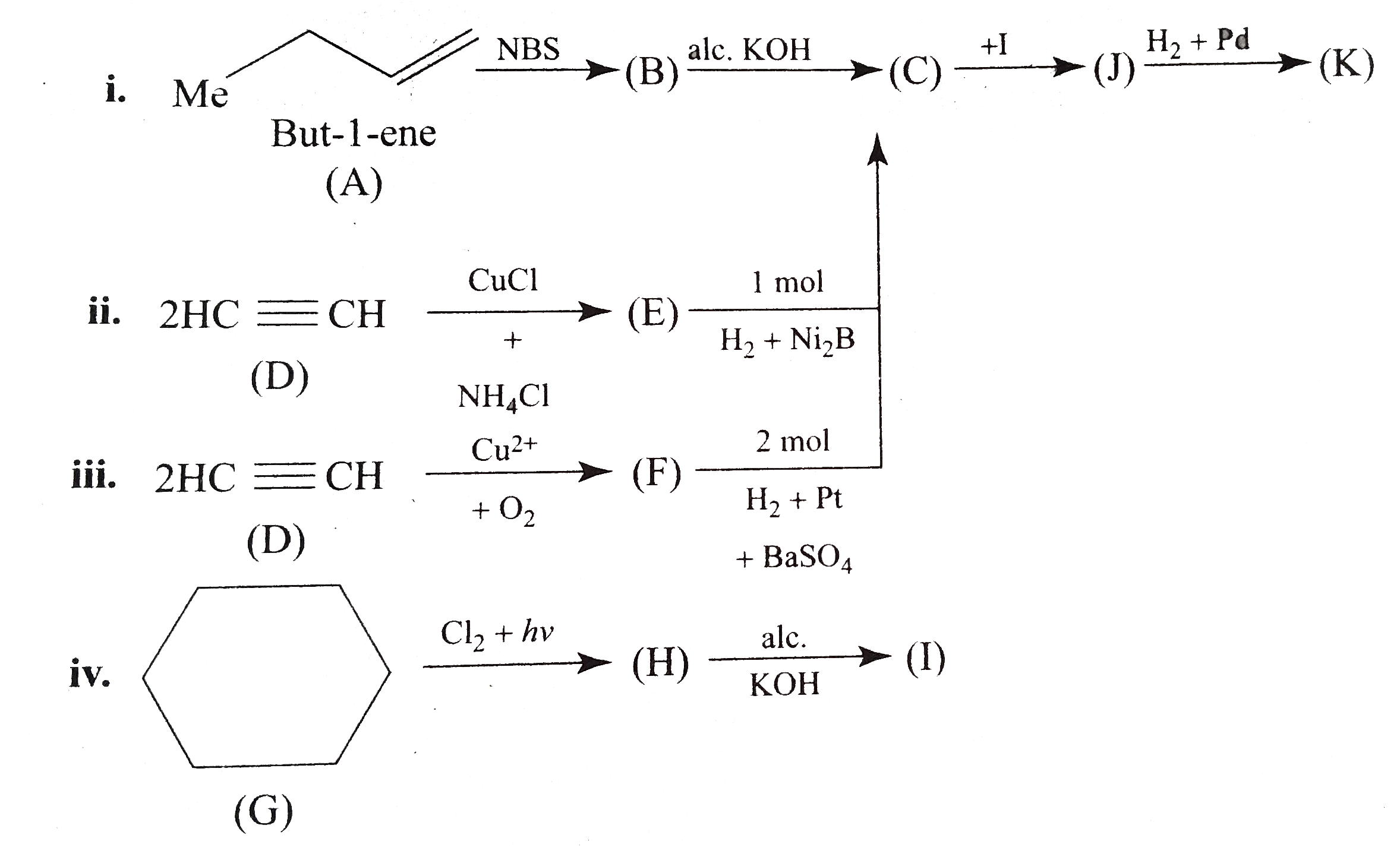
View SolutionIdentify the products.
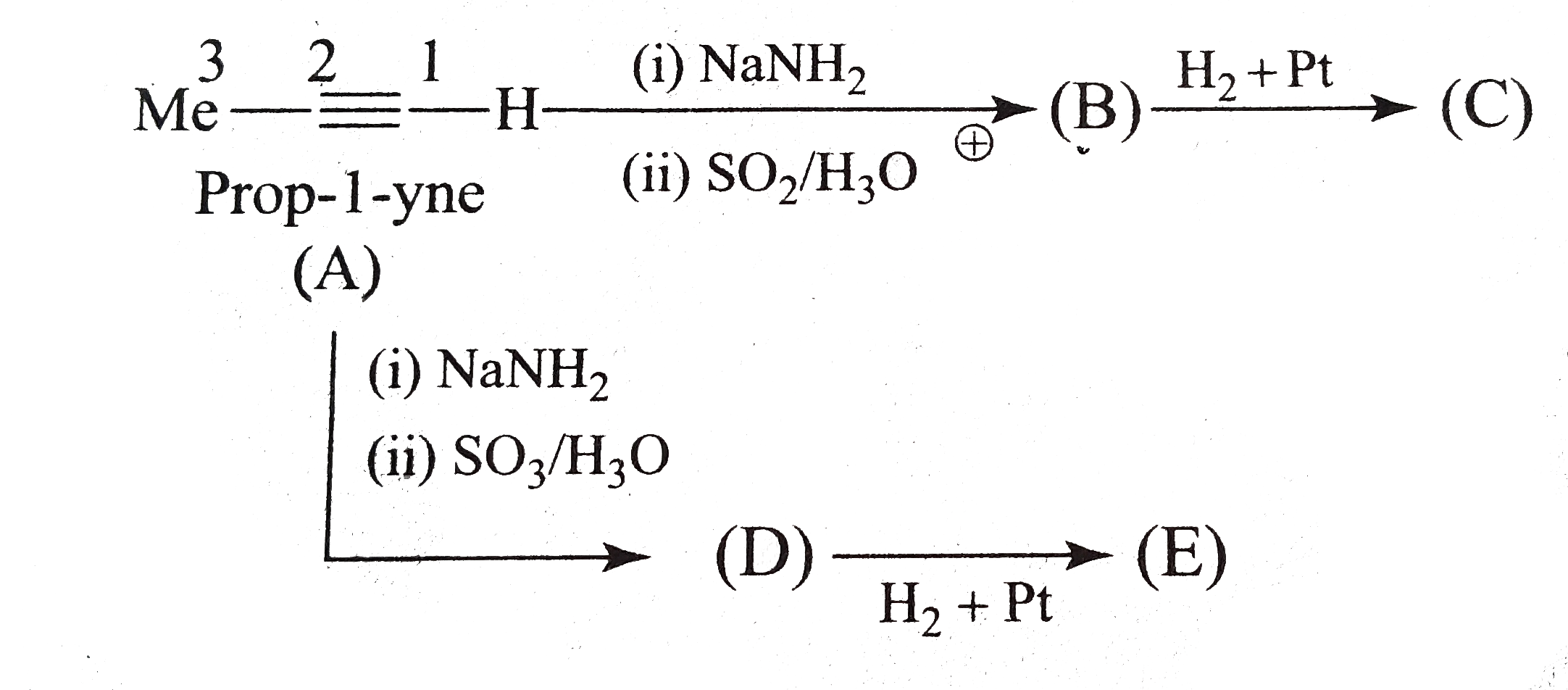
View SolutionOleic acid and eladic acid are naturally occuring compounds which are isolated from various oils and fats.
Both diastereomers have one double bond at `C-9`. Oleic acid is cis and eladic acid is a trans isomer at `C-9`. Both have molecular formula `C_(17)H_(33)COOH`. Synthesise both from ethyne.
View SolutionGive the products formed from the reactions of each of the following compounds with: i. `KMnO_4` in warm acid
ii. `O_3//H_2O`
a. Pent-1-yne
b. Nona-2, 6-diyne
c. Hex-3-yne
d. 2-Methylhept-3-type
View SolutionIdentify (A) to (C).
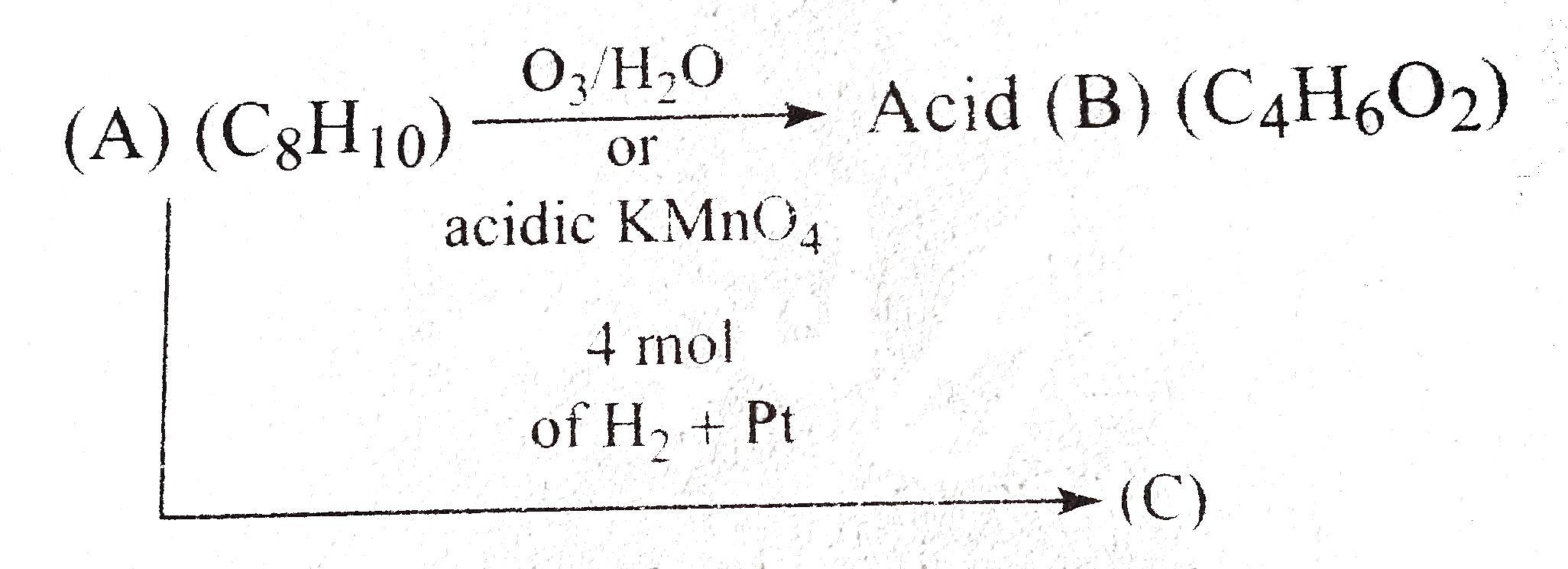
View SolutionComplete the following reactions:
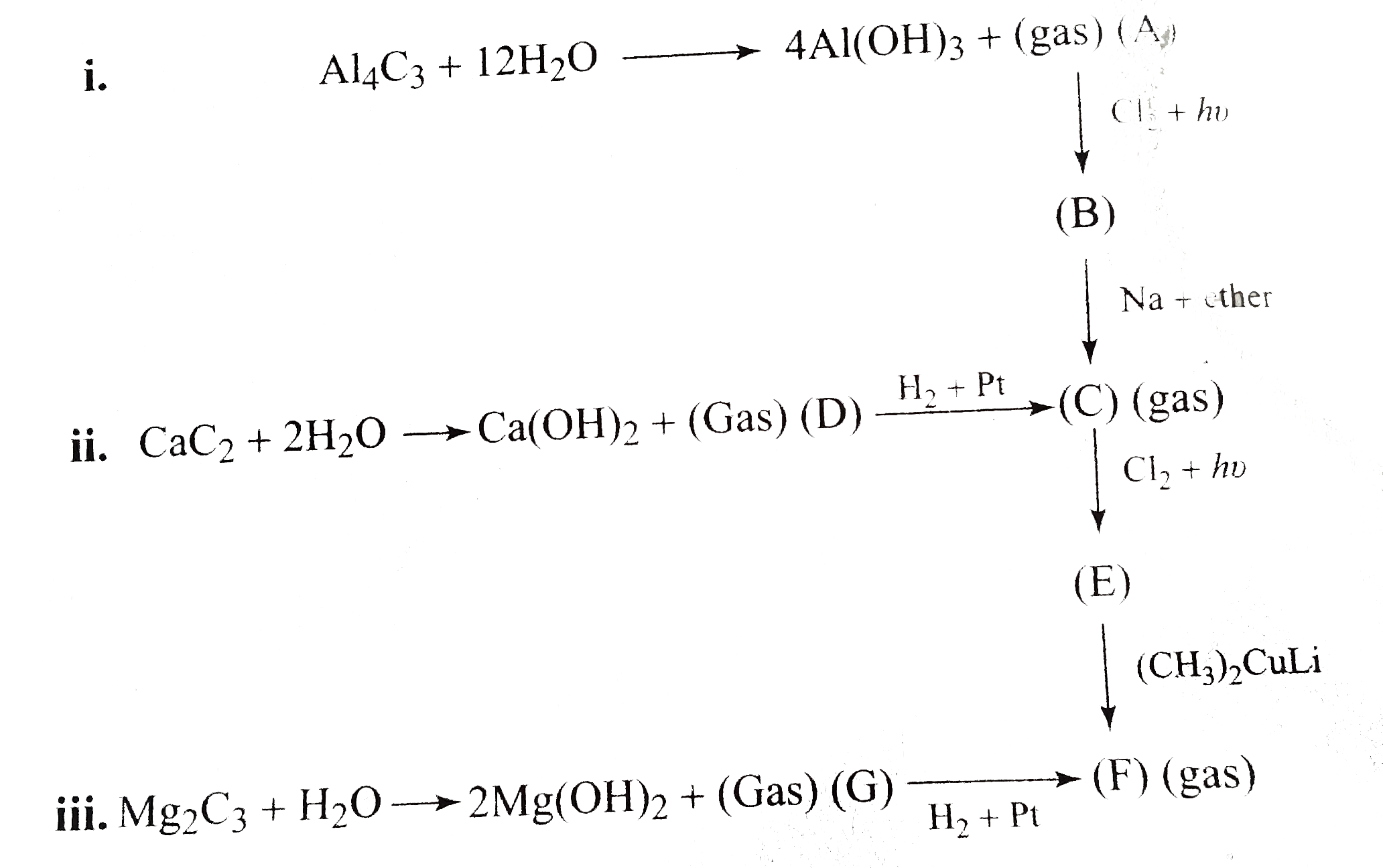
View SolutionIdentify the products.

View SolutionIdentify (A) to (D).

View SolutionConvert the following:

View SolutionConvert the following:

View SolutionIdentify the products:
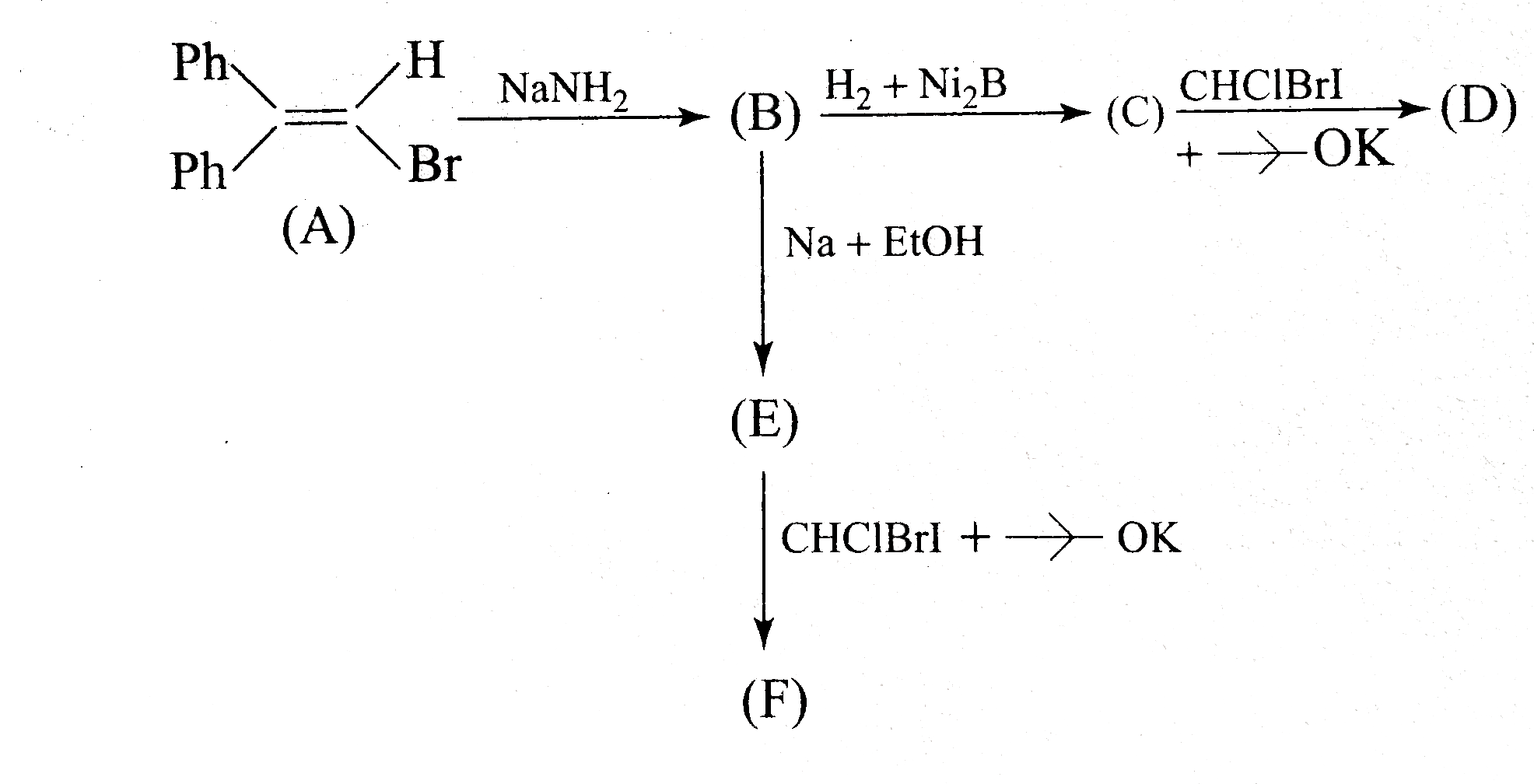
View SolutionIdentify the three alkynes A, B `(CH_(10)H_(18))`, and C `(C_(10)H_(16))` which give the following reactions.
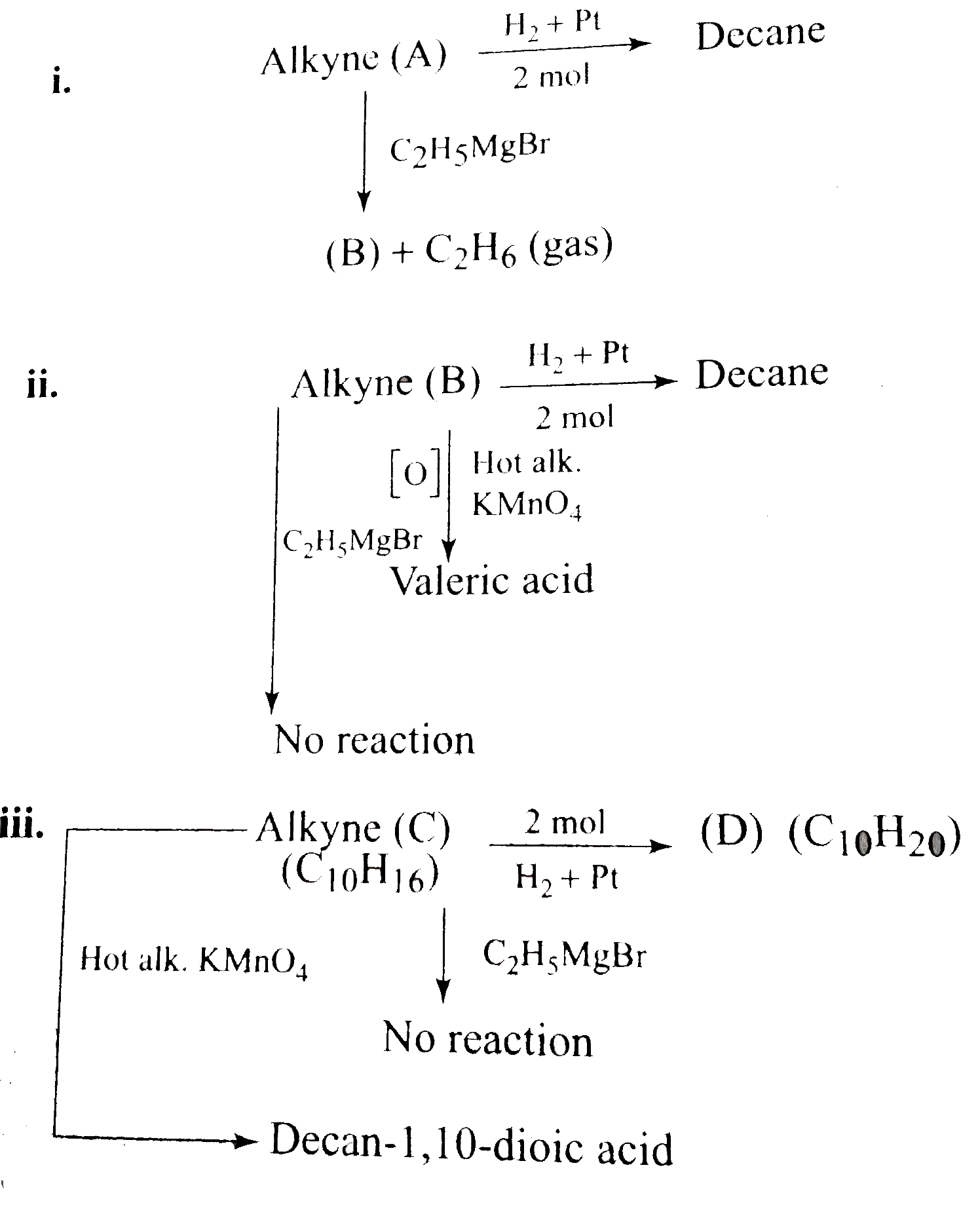
View SolutionDeduce the structural fomula of a compound A `(C_6H_(10))` which shows the following reactions:
i. Adds 2 mol of `H_2` to form 2-methyl pentate.
ii. Reacts with aqueous `H_2SO_4+HgSO_4` solution to give a carbonyl compound.
iii. Does not react with ammoniacal `AgNO_3` solution.
View SolutionIdentify (A) to (E).
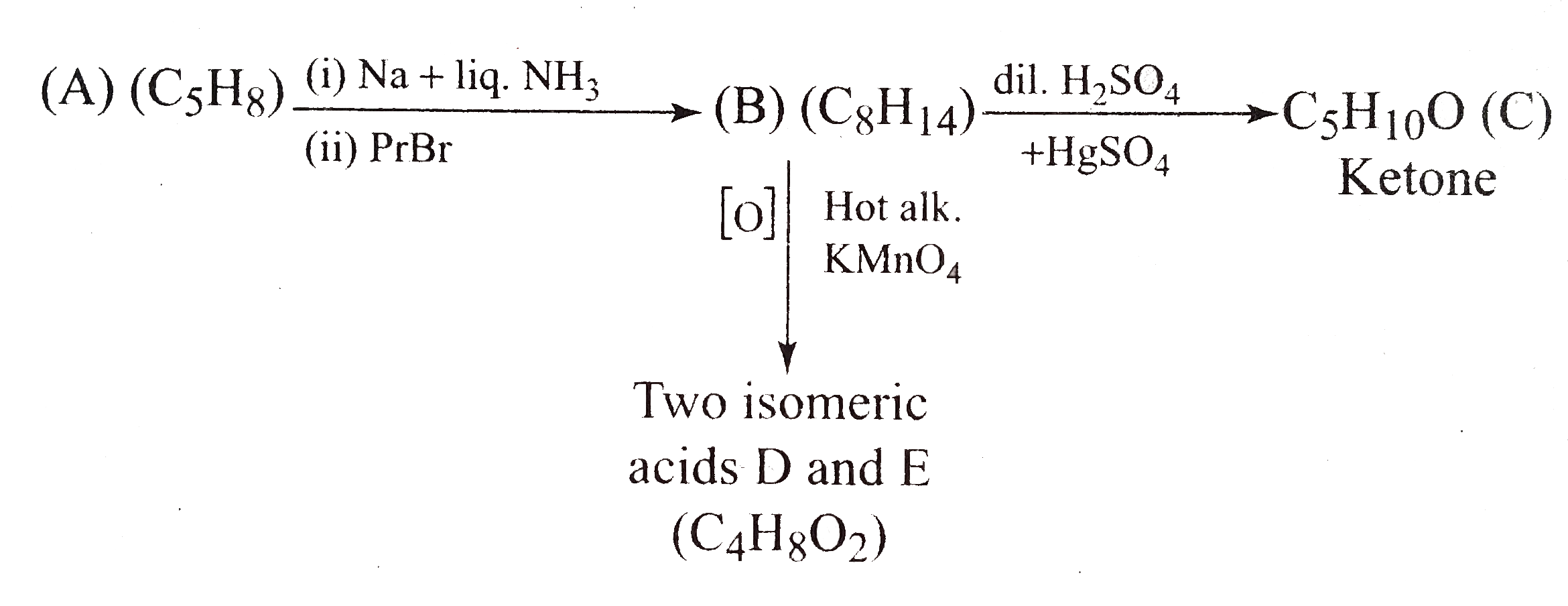
View SolutionWrite the structures of isomeric hexynes and also give their IUPAC names.
View SolutionWhat are the geometrices of:
i. Prop-1-yne
ii. But-2-yne
iii. Hept-2-en-5-yne
View SolutionComplete the following:
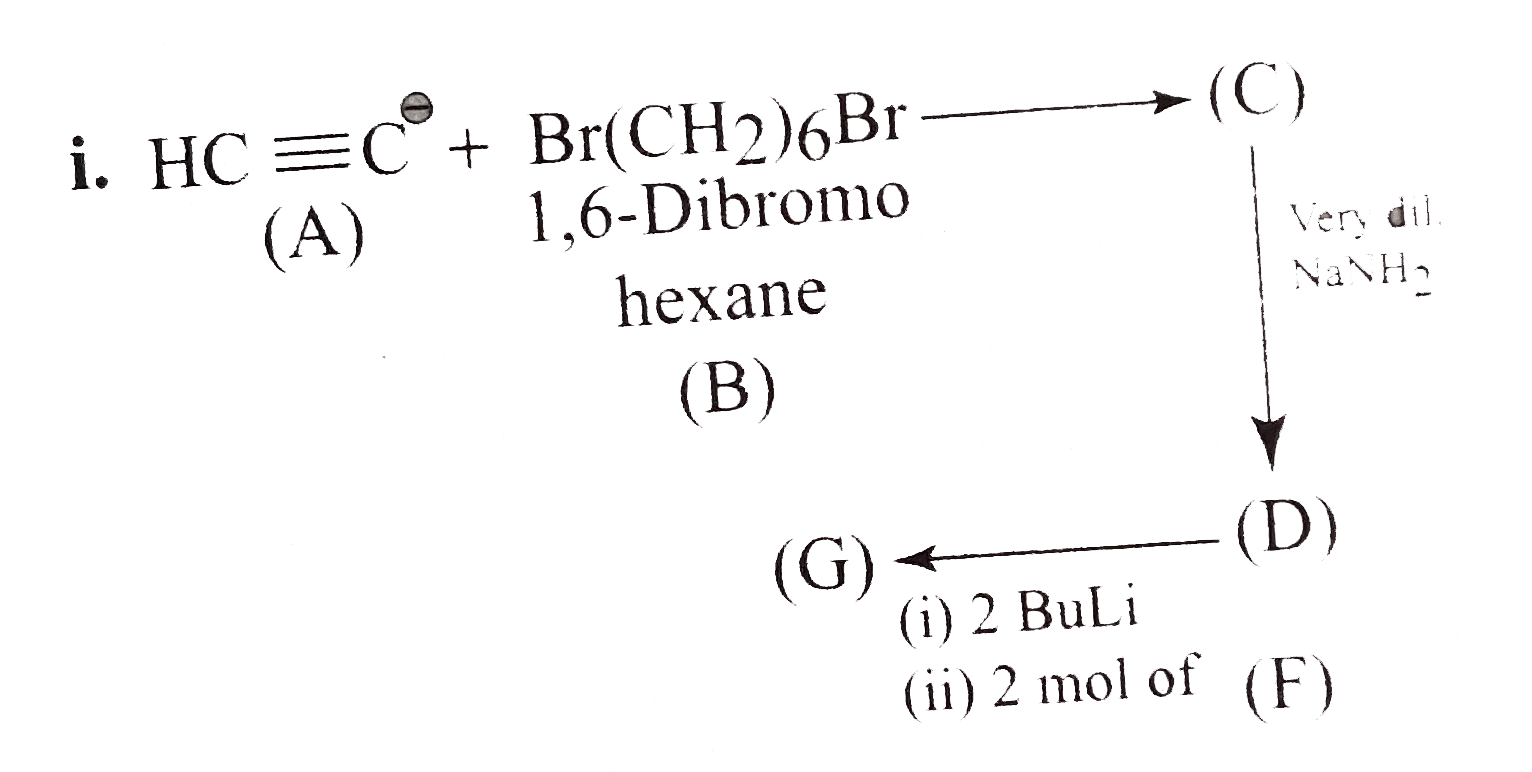
View SolutionIdentify A, B and C.

View SolutionIdentify the products.

View Solutiona. Convert but-1-yne to but 2-yne and vice versa.
b. Convert (cis or trans) pent-2-ene to pent-2-yne and vice versa.
View SolutionComplete the following

View SolutionIdentify the products.
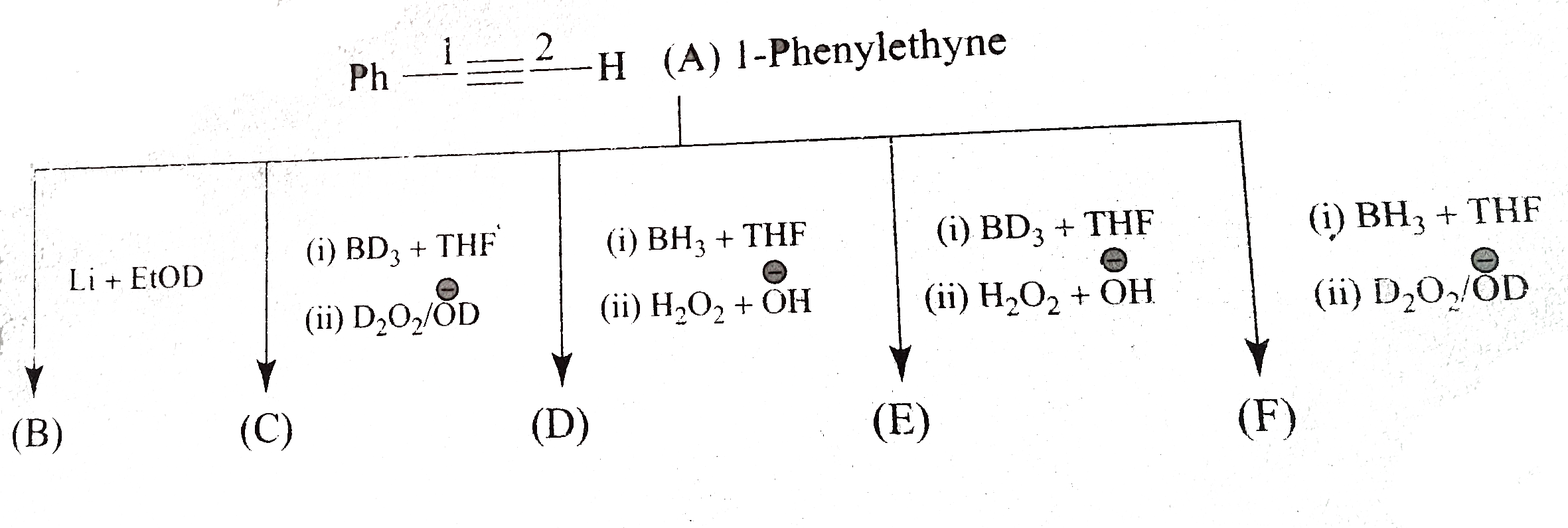
View SolutionComplete the following reaction

View SolutionThere are two paths to prepare compound (C).
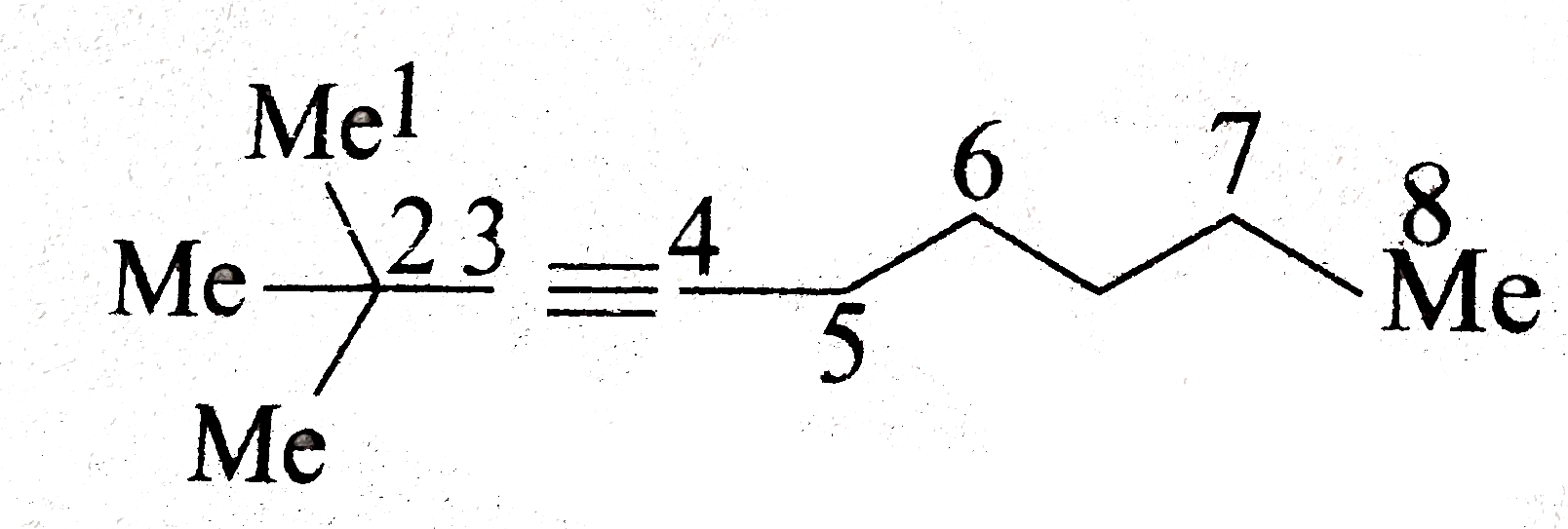
Which path is feasible and why?

View SolutionGive the structures of reactants:
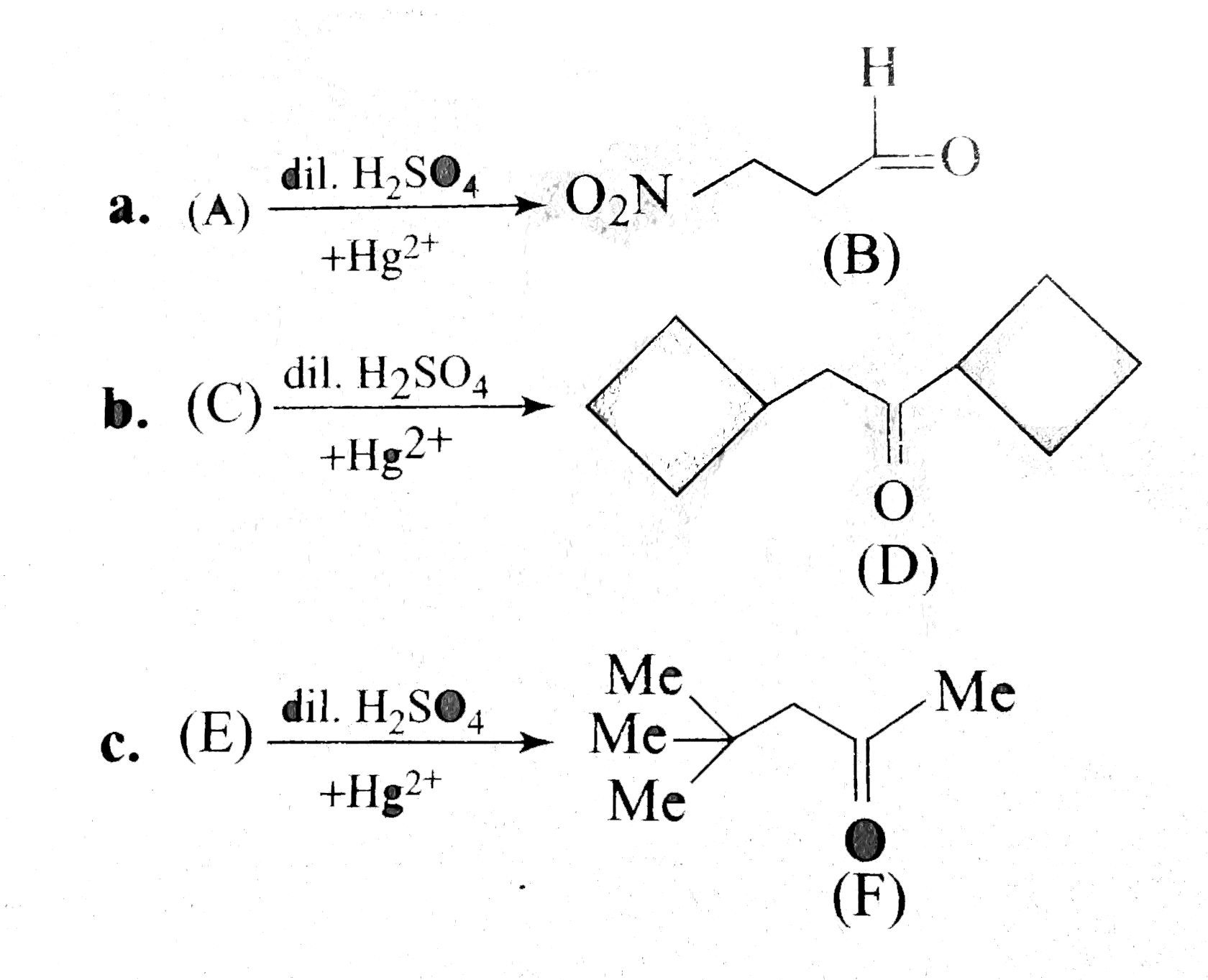
View SolutionGive the structure of reactants:
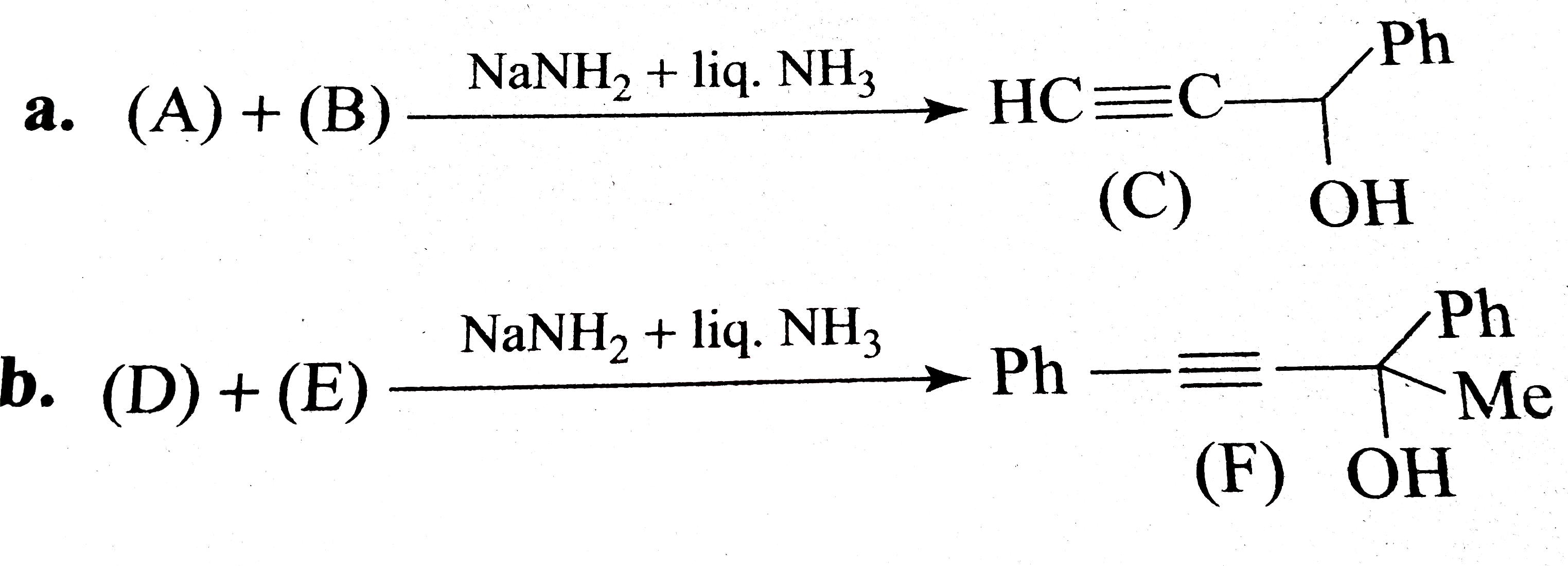
View SolutionComplete the following equations:

View SolutionWith alcoholic potash, `C_4H_8Cl_2` (A) gives `C_4H_6` (B), which reacts with ammoniacal cuprous chloride. Identify the compounds (A) and (B).
View SolutionThree compounds A, B, and C are isomers of the formula `C_5H_8`. All of them decolourise bromine in `C Cl_4` and give a positive test with Baeyer's reagent. All three compounds dissolve in cone. `H_2SO_4`. Compound A gives a white precipitate with ammoniacal silver nitrate, whereas compounds B and C do not react with it. On hydrogenation, in the presence of platinum catalyst, both compounds A and B yield n-pentane, whereas compound C gives a product of formula `C_5H_(10)`. On oxidation with hot acidified `KMnO_4`, B gave acetic acid and `CH_3CH_2COOH`. Identify compounds A, B, and C.
View SolutionA dihalogen derivative (A) of a hydrocarbon having two carbon atoms reacts with alcoholic potash and forms another hydrocarbon which gives a red precipitate with ammoniacal cuprous chloride. Compound A gives an aldehyde when treated with aqueous KOH. Write down the name and formula for the organic compound.
View SolutionAn unsaturated hydrocarbon (A), `C_6H_(10)`, readily gives (B) on treatment with `NaNH_2` in liquid `NH_3`. When (B) is allowed to react with 1-chloropropane, a compound (C) is obtained. On partial hydrogenation in the presence of Lindar's catalyst, (C) gives (D), `C_9H_(18)`. On ozonolysis, (D) gives 2, 2-dimethylpropanal and 1-butanal. Identify compounds A, B, C and D.
View Solution
Exercises (Subjective Type) questions and complete solutions for chapter ALKYNES of CENGAGE CHEMISTRY (HINGLISH) of Class 11
All Exercises from CENGAGE CHEMISTRY Class 11 CHEMISTRY ALKYNES
- Exercises (Archives - Analytical and Desriptive Type)
- Exercises (Archives - Fill in the Blanks Type)
- Exercises (Archives - Single Correct Answer Type)
- Exercises (Linked Comprehension Type)
- Exercises (Multiple Correct Answers Type)
- Exercises (Single Correct Answers Type)
- Exercises (Subjective Type)
- Illustrations
- Solved Examples